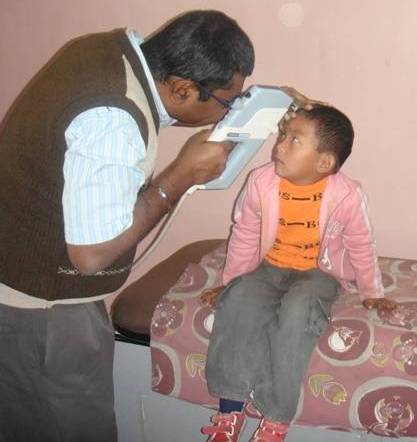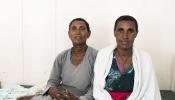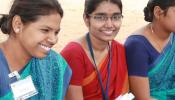For a what is supposed to be a rare eye condition, I've heard way too much about retinoblastoma cases lately.
Just the other day an ophthalmologist friend in Vancouver mentioned seeing a case and today we got a story of a little boy in Nepal who suffered from retinoblastoma.
Retinoblastoma is a rapidly developing cancer which develops in the cells of the retina, the light detecting tissue of the eye. Retinoblastoma is rare and affects approximately 1 in 20,000 live births. Untreated retinoblastoma is almost always fatal; therefore, early diagnosis and treatment is critical to saving lives. In the developed world, retinoblastoma has one of the best cure rates of all childhood cancers (95-98%), with more than nine out of every ten sufferers surviving into adulthood.
There are two forms of the disease; a genetic, heritable form and a non-genetic, non-heritable form. Approximately 55% of children with Rb have the non-genetic form. If there is no history of the disease within the family, the disease is labelled "sporadic", but this does not necessarily indicate that it is the non-genetic form.
In about two thirds of cases, only one eye is affected (unilateral retinoblastoma); in the other third, tumours develop in both eyes (bilateral retinoblastoma). The number and size of tumours on each eye may vary. In certain cases, the pineal gland is also affected (trilateral retinoblastoma). The position, size and quantity of tumours are considered when choosing the type of treatment for the disease.
Himal, age 5, from was brought to Seva's partner hospital, the Lumbini Eye Institute by his grandmother on February 1st with a history of no vision in his left eye.
The family hadn't noticed that the boy was blind in one eye until a week earlier when they were watching TV and the little boy's right eye was itchy so he covered it temporarily.


Himal, age 5, is examined and diagnosed with retinoblastoma in his left eye. Photo courtesy of Seva Canada
The family immediately took Himal to the local health post in a nearby village and the staff there referred him to the Lumbini Eye Institute. After a detailed examination, Himal was diagnosed with retinoblastoma in his left eye. The pediatric ophthalmologist was unable to restore the sight in the boy's damaged eye, but was able to save the child's life by removing the left eye. It is vital that children receive eye exams. The most common and obvious sign of retinoblastoma is an abnormal appearance of the pupil. Many parents refer to this reflection as “cat’s eye” or “white eye”. Medically, it is known as leukocoria. Other less common and less specific signs and symptoms are: deterioration of vision, a red and irritated eye, faltering growth or delayed development. Some children with retinoblastoma can develop a squint, commonly referred to as "cross-eyed" or "wall-eyed" (strabismus). However, retinoblastoma presence with advanced disease in developing countries and eye enlargement is a common finding. Screening for retinoblastoma should be part of a "well baby" screening for newborns during the first three months of life, to include:- The Red reflex: checking for a normal reddish-orange reflection from the eye's retina with an ophthalmoscope or retinoscope from approximately 30 cm / 1 foot, usually done in a dimly lit or dark room.
- The Corneal light reflex: checking for symmetrical reflection of beam of light in the same spot on each eye when a light is shined into each cornea, to help determine whether the eyes are crossed.
- Eye examination: checking for any structural abnormalities.


